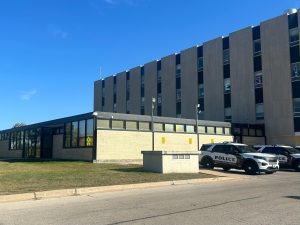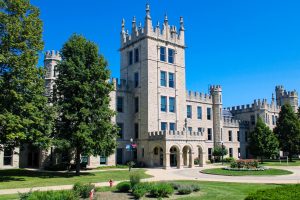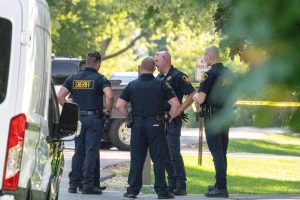Students see dead people … in class
January 28, 2008
With the help of NIU’s Chris Hubbard, associate professor of biological sciences, students from 11 area high schools will be taking field trips to a whole different level.
The students will head to NIU this spring to learn anatomy by viewing dissected human cadavers. Students spend a day in the lab and earn a grade for their work.
“It’s an experience like none other for high school students, and one that we hope will spark interest in pursuing careers in the health professions,” Hubbard said. “Students at the high schools flock to get into these courses. They think it’s cool.”
The program was launched three years ago and has seen participation numbers double. Hubbard said he was inspired by his former student, Julie Larson, to form the program. Larson is a teacher at Victor J. Andrews High School.
Hubbard originally received a onetime grant for the program from the American Association of Anatomists. To fund the program, high schools are charged $35 dollars per student to attend the course.
Hubbard said the goal of the program was to give students the resources unavailable to them in high school, since most high schools no longer offer anatomy classes.
“It’s too much work and not too many people want to take anatomy,” Hubbard said. “It’s not sexy chopping up dead things.”
Before the program starts, teachers are given an orientation into the lab and a chance to develop their own syllabus. Students then spend two days rotating between five different workstations and three cadavers. Students learn the inner workings of the human body, which serves to benefit those not pursuing health degrees too.
For example, they learn that the Biceps brachii flexes both the arm and forearms, while the xiphoid process is the most inferior part of the sternum. The cadavers are
pre-dissected beforehand so organs are available for study.
Hubbard said if they are studying the respiratory system, they will pass a lung around for students to view. This gives them a hands-on learning experience to the look, feel and function of their organs.
“It’s one thing to show a student models, pictures and diagrams,” Deborah Day said in a press release. Day is a health occupations teacher at Larkin High School in Elgin. “It’s quite another thing to view the actual human body and have an opportunity to
see it truly as it is. Concepts that are difficult to get across in our regular classroom become so much clearer.”
Hubbard said he would like to expand the program, but would need more staff and cadaver donors. Currently, NIU is already at a shortage of donors.






